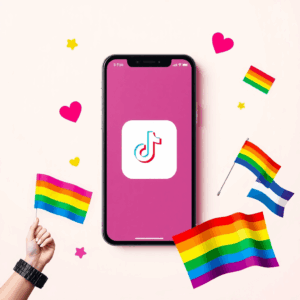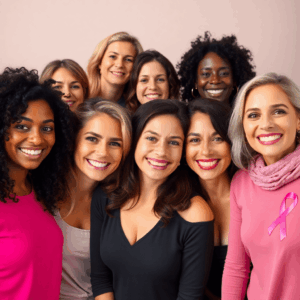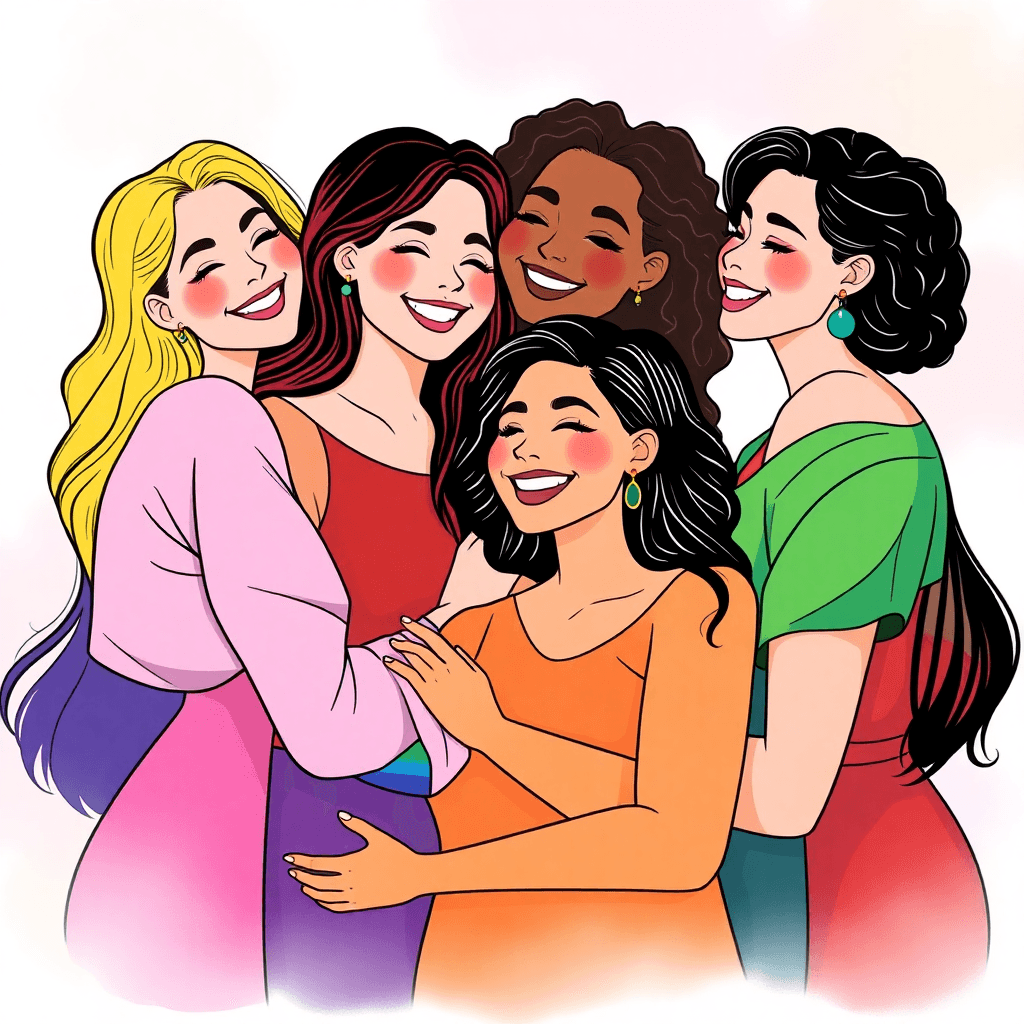Sexual orientation is one of the most personal and profound aspects of identity. The question “Why do women turn lesbian?” reflects a common curiosity about sexual orientation, yet the phrasing itself misunderstands the nature of lesbian identity.
Women who identify as lesbian or develop same-sex attractions experience their sexuality as an authentic expression of who they are. This journey of self-discovery varies significantly from person to person – some women know from an early age, while others recognize their attraction to women later in life.
Recent decades have seen significant changes in how society views lesbian relationships. Legal recognition of same-sex marriage, increased LGBTQ+ visibility in media, and growing acceptance in many communities have created safer spaces for women to explore and embrace their true sexual orientation.
Understanding lesbian identity requires acknowledging that sexual orientation isn’t a “choice” or “turn” – it’s an intrinsic part of human diversity. This exploration delves into the various factors that influence how and when women recognize, accept, and express their attraction to other women. For those seeking to understand more about lesbian lifestyle and culture, there are numerous resources available that provide insight into this aspect of human diversity.
The Complexity of Sexual Orientation
Sexual orientation is a complex mix of feelings, attractions, and identities that shape how people experience romantic and physical connections. Research shows that sexual orientation is not fixed but exists on a spectrum, with varying degrees of attraction to different genders.
Understanding Lesbian Identity
A lesbian identity comes from a genuine attraction to women, both emotionally and physically. This attraction can be seen in:
- Deep emotional connections with women
- Physical attraction to feminine features
- Romantic fantasies centered around women
- Natural desire for intimate relationships with women
The misconception that women “become” lesbian due to negative experiences with men oversimplifies the true nature of same-sex attraction. Studies indicate that lesbian identity develops independently of experiences with men, rooted instead in innate attractions and emotional fulfillment.
The Role of Self-Awareness
Self-awareness is crucial in understanding one’s sexual orientation. Many women describe a process of internal recognition where their attraction to women feels natural and authentic. This self-discovery often involves:
- Recognizing patterns in past attractions and relationships
- Understanding emotional needs and desires
- Accepting feelings without judgment
- Building confidence in personal identity
The journey of understanding one’s sexual orientation requires honest self-reflection and acknowledgment of genuine feelings. For many women, embracing a lesbian identity aligns their external expression with their internal truth.
Societal Shifts and Their Impact on Women’s Sexuality
The landscape for LGBTQ+ individuals has transformed dramatically in recent decades. Women now experience unprecedented freedom to explore and express their sexual orientation openly, backed by legal protections and growing social acceptance.
Key Legal Milestones:
- 2015 U.S. Supreme Court decision legalizing same-sex marriage
- Equal workplace protections in many countries
- Anti-discrimination laws protecting LGBTQ+ rights
- Recognition of same-sex partnerships across Europe
These legal changes create a safer environment for women to acknowledge their attraction to other women. A woman living in 2024 faces different social pressures than previous generations, with many communities celebrating rather than stigmatizing lesbian identities.
The rise of LGBTQ+ advocacy groups provides support networks and resources for women questioning their sexuality. Pride events, community centers, and online forums create spaces where women can connect with others sharing similar experiences.
Cultural acceptance has shifted significantly:
- Workplace diversity initiatives embracing LGBTQ+ employees
- Religious institutions becoming more inclusive
- Schools implementing anti-bullying policies
- Healthcare providers offering specialized LGBTQ+ care
This evolving social climate empowers women to recognize and embrace their authentic selves. Many women report feeling less pressure to conform to heterosexual expectations, leading to more honest exploration of their attractions and relationships with other women.
The Role of Media and Representation in Shaping Lesbian Identities
Media representation plays a crucial role in helping women recognize and understand their attraction to other women. The increasing visibility of lesbian characters in popular TV shows like Orange Is the New Black, The L Word, and Killing Eve provides relatable role models and authentic portrayals of lesbian relationships.
Improvements in Lesbian Representation
Recent years have seen significant improvements in lesbian representation across various media platforms:
- Streaming Services: Netflix, Amazon Prime, and Hulu feature diverse content with lesbian main characters
- Mainstream Movies: Films like Carol and Portrait of a Lady on Fire showcase complex lesbian relationships
- Social Media: LGBTQ+ content creators share real-life experiences and stories
- Advertising: Major brands now include lesbian couples in their campaigns
This increased visibility helps normalize same-sex relationships and provides women with examples of successful, happy lesbian relationships. Popular shows featuring lesbian characters receive millions of viewers, demonstrating widespread acceptance and interest in these stories.
The Impact of Positive Media Representation
The impact of positive media representation extends beyond entertainment:
- Creates role models for young women questioning their sexuality
- Reduces isolation by showing diverse lesbian communities
- Challenges stereotypes through nuanced character portrayals
- Provides language and context for women to understand their feelings
Social media platforms amplify lesbian voices through personal stories, coming out videos, and relationship content. These authentic representations help women see themselves reflected in others’ experiences and foster a sense of belonging within the lesbian community.
Influence of LGBTQ+ Family, Friends, and Late-Blooming Lesbians
The Impact of LGBTQ+ Family Members
Having LGBTQ+ family members creates powerful ripple effects across generations. Women with LGBTQ+ children often experience a profound shift in perspective, leading them to question their own identity and sexuality. This intergenerational impact opens doors to self-discovery that might have remained closed in previous decades.
The Role of Support Networks
Support networks play a crucial role in women’s journeys of sexual identity exploration. Studies show that women with LGBTQ+ friends are 3 times more likely to feel comfortable exploring their own sexuality. These connections provide:
- Safe spaces for honest conversations
- Role models who demonstrate authentic living
- Understanding and acceptance without judgment
- Resources and shared experiences
Understanding Late-Blooming Lesbians
The phenomenon of “late-blooming lesbians” has gained recognition in recent years. Many women discover their attraction to other women after years – sometimes decades – of heterosexual relationships. This discovery often stems from:
- Deep emotional connections with female friends
- Recognition of unfulfilled needs in previous relationships
- Growing self-awareness and life experience
- Freedom from societal expectations
Research indicates that women’s sexuality can be more fluid throughout life compared to men’s. A significant number of women report experiencing same-sex attraction for the first time in their 30s, 40s, or later. These revelations often occur during periods of personal growth or after meeting someone who sparks unexpected feelings.
The Importance of Supportive Communities
The presence of supportive LGBTQ+ communities helps women navigate these discoveries with greater confidence. Local LGBTQ+ groups, online forums, and social networks create environments where women can explore their identity at their own pace. Additionally, the rise of online platforms has also opened up new avenues for connection and exploration, similar to the Mail Order Bride Sites which offer essential strategies for successful online dating with foreign women.
Furthermore, it’s noteworthy that the journey towards self-acceptance and understanding one’s sexual identity can be influenced significantly by age-related factors. According to recent research, older adults may experience distinct shifts in their social relationships, including those related to sexual identity. This highlights the importance of considering age as a variable in the discussion about sexual orientation and identity exploration.
Emotional Intimacy, Relationship Dynamics, and Age Inclusivity in Lesbian Communities
Many women discover profound emotional connections in same-sex relationships that differ significantly from their heterosexual experiences. The depth of understanding between women creates unique relationship dynamics built on shared experiences and mutual empathy.
Key aspects of lesbian relationships include:
- Equal distribution of emotional labor
- Shared understanding of feminine experiences
- Breaking free from traditional gender roles, including the toxic masculinity often present in heterosexual relationships
- Deep emotional intimacy through shared communication styles
Lesbian relationships often challenge traditional power dynamics found in heterosexual partnerships. Women report feeling more comfortable expressing vulnerability, sharing domestic responsibilities, and making joint decisions without prescribed gender expectations.
The age-inclusive nature of lesbian communities creates spaces where women can explore authentic connections regardless of their life stage. These relationships frequently emphasize:
- Emotional availability
- Active listening and validation
- Mutual growth and support
- Shared decision-making processes
Research indicates that lesbian couples demonstrate higher levels of satisfaction in areas of emotional intimacy and partnership equality. The absence of gendered expectations allows partners to create relationship structures based on individual strengths rather than societal roles.
Women in same-sex relationships often describe a sense of being truly seen and understood by their partners. This deep recognition extends beyond physical attraction to encompass emotional, intellectual, and spiritual connections that form the foundation of fulfilling partnerships.
Challenges, Rewards, and Personal Journeys of Embracing a Lesbian Identity
Coming out as lesbian demands immense emotional strength. Many women face internal struggles with self-acceptance, questioning their identity against societal expectations. The journey often involves confronting deep-seated beliefs about sexuality, relationships, and personal worth.
Common challenges include:
- Family rejection or strained relationships
- Workplace discrimination
- Religious conflicts
- Loss of certain friendships
- Safety concerns in public spaces
- Dating pool limitations in smaller communities
These obstacles can create significant emotional stress, yet the path toward authenticity brings profound rewards. Women who embrace their lesbian identity report:
- Deeper self-understanding and acceptance
- Freedom from societal gender expectations
- Authentic expression in relationships
- Strong bonds within LGBTQ+ communities
- Personal growth through adversity
- Mentorship opportunities for others
The lesbian community offers unique support systems through:
- LGBTQ+ centers and organizations
- Online forums and social media groups
- Pride events and gatherings
- Support groups for specific demographics
- Professional networks
- Health and wellness resources
Many women discover their resilience through this journey. The process of embracing a lesbian identity, while challenging, leads to genuine self-discovery and meaningful connections within supportive communities.
Conclusion
Sexual orientation is complex and cannot be easily explained or categorized. The experiences of women who realize they are attracted to other women show us that human sexuality is fluid and intricate. Each woman’s journey to understanding and accepting her lesbian identity is different – some women recognize these feelings early in life, while others come to know their true selves after being in heterosexual relationships for many years.
The increasing visibility of lesbian relationships, along with growing societal acceptance, creates space for women to explore and understand their authentic selves. This process of self-discovery reflects personal growth, courage, and the human need for genuine connection.
Key takeaways about lesbian identity:
- Sexual orientation exists on a spectrum rather than fixed categories
- Self-discovery can happen at any age or life stage
- Authentic relationships trump societal expectations
- Support and acceptance enable women to live truthfully
Your journey of understanding your sexuality deserves respect, patience, and compassion – whether you’re questioning, exploring, or confidently embracing your lesbian identity.
FAQs (Frequently Asked Questions)
Why do some women identify as lesbian or develop same-sex attractions?
Women may identify as lesbian or develop same-sex attractions due to the complex and personal nature of sexual orientation, which involves multifaceted emotional and self-awareness factors rather than simply reacting to dissatisfaction with men.
How have societal shifts influenced the visibility and acceptance of lesbian identities?
Greater societal acceptance, including legal milestones like the legalization of same-sex marriage in many Western countries, has reduced fear around coming out and encouraged more women to openly identify as lesbian, reflecting cultural shifts in LGBTQ+ rights.
What role does media representation play in shaping lesbian identities?
Increased visibility of lesbians in media such as TV, movies, and commercials helps women envision themselves within lesbian communities by normalizing diverse sexual orientations and providing positive representation that fosters acceptance.
How do relationships with LGBTQ+ family and friends impact women’s exploration of their sexuality?
Supportive social circles, including relationships with LGBTQ+ children or younger family members, empower women to explore or embrace their own sexuality by fostering courage, self-reflection, and a sense of belonging within welcoming communities.
Why might some women discover or acknowledge their attraction to other women later in life?
Some women may come to recognize same-sex attractions later in life after heterosexual marriages or relationships due to evolving self-awareness, emotional needs for intimacy and equality found in lesbian partnerships, and changing societal attitudes that support such discoveries.
What are the challenges and rewards associated with embracing a lesbian identity?
Embracing a lesbian identity requires emotional courage to come out amid potential social stigma and internalized beliefs; however, it also offers rewarding aspects like finding supportive communities, deep emotional satisfaction, and fulfilling relationship dynamics characterized by equality and intimacy.
Written by
Joshua Gonzales
You may also interested in:

What does the Bible say about lesbian women?
Explore what the Bible says about lesbian women, focusing on scripture, context, and distinctions between attraction and behavior.
Why are straight women obsessed with lesbian TikTok?
Explore why straight women are drawn to lesbian TikTok, from curiosity and identity to authentic connections and community support.
